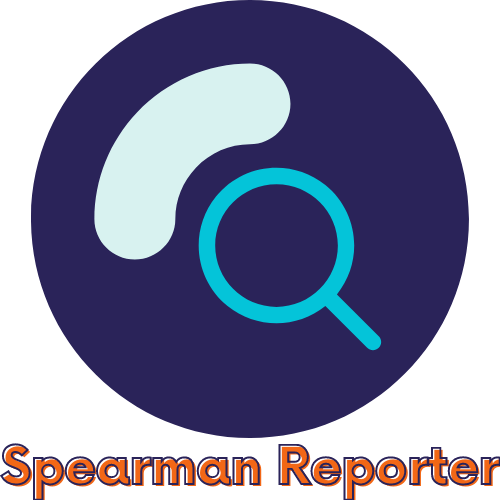
When starting a business in France, selecting the right legal structure is a critical decision that affects everything from taxation to personal liability. Two of the most common business structures in France are the SARL (Société à Responsabilité Limitée) and the EURL (Entreprise Unipersonnelle à Responsabilité Limitée). Understanding the fundamental differences between these options can help entrepreneurs make informed decisions that align with their business goals and operational needs.
The Fundamentals of SARL and EURL in French Business Law
French business law provides several company structures to accommodate different entrepreneurial needs. Professional consultancy firms like Criterio Selecta often advise clients on the optimal business formation based on their specific circumstances. The SARL and EURL represent two of the most popular limited liability options in the French business landscape, each with its distinct legal framework and operational implications.
Legal foundations and definitions of these limited liability structures
The SARL is a private limited liability company designed for small to medium-sized enterprises with multiple partners. It requires at least two shareholders and can accommodate up to 100 participants. Each partner's financial responsibility is limited to their capital contribution, providing crucial protection for personal assets. The structure requires a manager known as a gérant, who may be selected from among the shareholders or appointed externally.
The EURL, by contrast, is essentially a variant of the SARL but designed specifically for sole proprietors. It maintains all the limited liability benefits of a SARL while accommodating a single owner. This structure effectively allows individual entrepreneurs to separate their personal and business assets while maintaining complete control over their company. An EURL can later transition into a SARL if additional partners join the business.
Historical context and evolution of French company formats
The development of French business structures reflects the evolving needs of the commercial sector. The SARL was established to provide smaller businesses with limited liability protection previously available only to larger corporations. The EURL emerged later as a response to the growing number of sole entrepreneurs seeking the same liability protections without the need for additional partners.
Both structures have undergone significant reforms in recent years to simplify formation procedures and reduce administrative burdens. Most notably, the minimum capital requirement for both SARL and EURL formations was reduced to just €1, though financial advisors typically recommend a more substantial initial investment to ensure credibility with banks and business partners.
Limited liability protection: how both structures safeguard personal assets
One of the primary advantages shared by both the SARL and EURL is the limited liability protection they offer to business owners. This crucial feature distinguishes these structures from simpler business forms like the traditional sole trader arrangement.
The scope of liability protection for business owners
In both SARL and EURL structures, the liability of shareholders is strictly limited to their capital contributions. This means that if the business faces financial difficulties or legal claims, the personal assets of the owners—such as their homes, personal savings, or vehicles—remain protected from creditors. This separation creates a vital financial firewall that encourages entrepreneurship by reducing personal risk.
However, this protection is not absolute. In cases of proven managerial negligence, fraud, or violation of legal obligations, courts may pierce the corporate veil, potentially exposing managers to personal liability. This underscores the importance of maintaining proper corporate governance and accounting practices regardless of which structure is chosen.
Legal distinctions in asset separation between personal and company property
Both structures establish a clear legal boundary between company and personal assets. The business becomes a distinct legal entity with its own rights and obligations. This separation requires maintaining dedicated business bank accounts and careful accounting of all business transactions, ensuring they remain separate from personal finances.
For EURLs, where the business and owner may seem more closely aligned, this separation becomes particularly important. Courts and tax authorities scrutinize single-owner businesses more carefully to ensure the corporate form is not being used improperly. Proper documentation and consistent treatment of the business as a separate entity are essential to maintaining the liability shield these structures provide.
Sarl structure: multiple partners and operational dynamics
The SARL structure is designed specifically for businesses with multiple stakeholders, offering a framework that balances control, responsibility, and profit-sharing among partners.
Governance mechanisms and decision-making processes
In a SARL, management responsibility typically falls to one or more gérants (managers) who may be shareholders themselves or appointed externally. The gérant handles day-to-day operations and represents the company in dealings with third parties. Major decisions affecting the company's structure or significant investments typically require approval from shareholders, with voting power proportional to capital contribution.
The decision-making process in a SARL follows established rules that balance efficiency with partner input. Ordinary decisions require a simple majority of shares represented, while more significant changes like modifying the articles of association or changing the company's core business typically require a qualified majority of at least two-thirds. This structured approach ensures that while the gérant maintains operational control, shareholders retain influence over strategic direction.
Capital requirements and partner contribution arrangements
Although the minimum capital requirement for a SARL is just €1, practical considerations often necessitate a more substantial investment. Partners can contribute to the SARL's capital in various forms, including cash, equipment, intellectual property, or expertise, with each contribution carefully valued and documented in the articles of association.
The distribution of shares among partners directly influences their voting rights and profit entitlements. Unlike some other business structures, a SARL offers flexibility in allocating profits and losses, which need not be strictly proportional to capital investment. This allows partners to structure arrangements that recognize different types of contributions to the business, such as providing expertise or client relationships alongside financial investment.
Eurl framework: single ownership advantages and considerations
 The EURL provides a tailored solution for solo entrepreneurs who want limited liability protection without the complexity of managing multiple shareholder relationships.
The EURL provides a tailored solution for solo entrepreneurs who want limited liability protection without the complexity of managing multiple shareholder relationships.
Streamlined management benefits for sole proprietors
The EURL offers significant administrative advantages for individual business owners. As the sole shareholder, the entrepreneur has complete control over all business decisions without needing to consult other stakeholders. This streamlined decision-making process allows for greater agility and faster response to market opportunities or challenges.
The sole owner typically serves as the gérant (manager) of the EURL, further simplifying the management structure. This dual role eliminates potential conflicts between ownership and management interests that can arise in multi-partner businesses. The owner-manager has the authority to set business strategy, manage daily operations, and determine how profits are utilized or distributed.
Transition possibilities between EURL and SARL status
One of the most valuable features of the EURL structure is its flexibility to evolve as the business grows. If the sole owner decides to bring in additional partners, the EURL can be converted to a SARL without dissolving the company or creating a new legal entity. This transition requires updating the articles of association and registering the changes with the appropriate authorities.
Conversely, if a SARL sees its shareholder count reduced to one through the departure of other partners, it automatically transforms into an EURL. This built-in adaptability makes these structures particularly suited to businesses that may experience changes in ownership over time, providing continuity despite shifts in the shareholder composition.
Tax Implications: Comparing Fiscal Regimes of SARL and EURL
The tax treatment of SARLs and EURLs represents one of the most significant factors in choosing between these structures, with implications for both the business and its owners.
Corporate taxation options available to each structure
By default, a SARL is subject to corporate income tax (Impôt sur les Sociétés or IS), with profits taxed at the company level before any distribution to shareholders. However, under certain conditions, smaller SARLs less than five years old can opt for income tax treatment (Impôt sur le Revenu or IR), where company profits flow directly to the shareholders' personal tax returns.
For an EURL, the taxation situation offers more flexibility. An EURL owned by an individual can choose between corporate tax or income tax treatment. Under the income tax option, all business profits are attributed directly to the owner's personal tax return, regardless of whether they are actually distributed. If corporate taxation is selected, only funds actually withdrawn as salary or dividends are taxed at the personal level.
Social contributions and dividend taxation differences
The social security contributions for business managers vary significantly based on their ownership percentage and the chosen company structure. In a SARL, a gérant who owns more than 50% of shares is considered self-employed (TNS – Travailleur Non Salarié) and pays social contributions of approximately 30-40% on their remuneration. Gérants with minority ownership are treated as employees with different contribution rates.
Dividend taxation also varies between structures. In a corporate-taxed SARL or EURL, dividends paid to shareholders are subject to a flat tax of 30% (known as the PFU or Prélèvement Forfaitaire Unique). However, for majority shareholders in self-employed status, dividends exceeding 10% of the company's capital may be subject to additional social contributions, significantly increasing the effective tax rate.
Establishing your business: administrative requirements comparison
The administrative procedures for establishing either a SARL or EURL involve several common steps, though with some variations reflecting their structural differences.
Documentation and registration procedures for each format
Both SARL and EURL formations require drafting articles of association (statuts) that outline the company's objectives, capital structure, management arrangements, and operational procedures. These documents must be signed by all shareholders—multiple partners for a SARL, or the single owner for an EURL.
The registration process involves publishing a notice of company formation in an authorized legal journal, opening a business bank account for capital deposits, and submitting the complete registration file to the appropriate Centre de Formalités des Entreprises (CFE). The specific CFE depends on the nature of the business activity, whether commercial, artisanal, liberal profession, or agricultural.
Associated costs and timeframes for business formation
The basic costs of establishing either a SARL or EURL are relatively modest, typically involving a few hundred euros for publication fees, registration charges, and basic documentation. However, most entrepreneurs engage professional assistance for the formation process, which can increase costs to €1,500 or more depending on the complexity of the arrangement and the level of customization in the articles of association.
The timeframe for completing the registration process typically ranges from two to four weeks from submission of the complete file. During this period, the company exists in a provisional state until it receives its official registration number (SIREN) and extract from the business register (Kbis). This document serves as the official birth certificate of the company, allowing it to fully commence operations as a recognized legal entity within the French business landscape.


